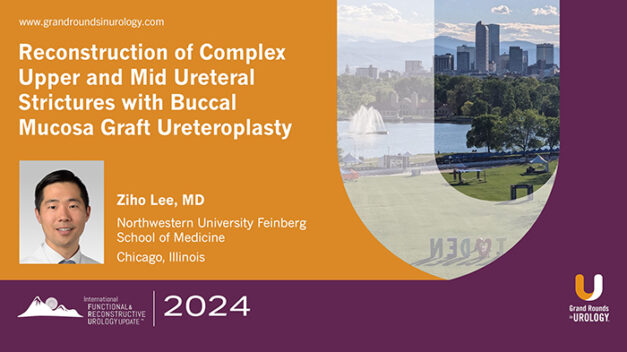Reconstruction of Complex Upper and Mid Ureteral Strictures with Buccal Mucosa Graft Ureteroplasty
Ziho Lee, MD, focuses on using buccal mucosa grafts in ureteral reconstruction and highlights their value in complex cases. Buccal mucosa grafts offer a practical alternative when standard resection and anastomosis are not feasible.
In this 11-minute presentation, Dr. Lee describes onlay grafts, where the anterior surface of the ureter is slit and patched with the graft, and augmented anastomotic repairs for more severe cases with obliterated segments. He shares a short video of both techniques.
Dr. Lee emphasizes the importance of minimizing tissue manipulation and dissection, particularly in cases with fibrosis. Strategies like measuring defects with precision and securing grafts using Monocryl sutures are discussed for graft placement. He recommends using omental wrapping or attaching grafts to the psoas muscle to ensure stability and promote vascularization, especially in retroperitoneal cases.


